Interview Patrick Kasingsing
Images Jean-Claude Girard and Neal Oshima
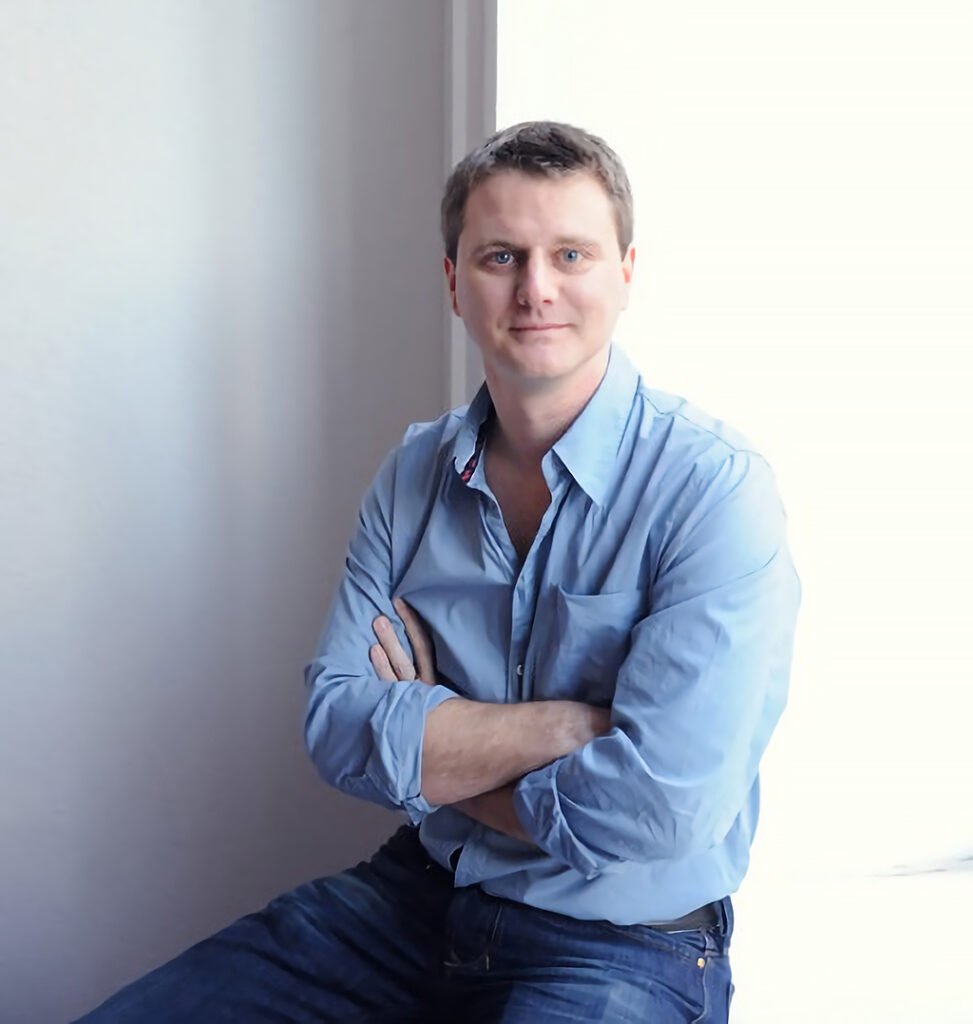

Bonjour, Jean-Claude! How are you feeling?
Kamusta! I am doing well and am very happy to speak with you.
You recently spoke at the mASEANa International Workshop on your research on Philippine National Artist for Architecture Leandro Locsin, which his son, Andy Locsin, says is the most comprehensive documentation and analysis he’s seen of our country’s most renowned architect. What attracted you, a Swiss expatriate, to Locsin’s oeuvre and compelled you to study it?
The first time I saw the National Theater fronting Manila Bay, I was struck by the abstraction of its silhouette. I first wondered whether it was a building or a sculpture because it was so radical, with almost no hints as to what you usually need for categorizing an object, like windows or a roof. That was before me and my family moved to Manila for a year back in 2012 for my wife’s post-doctoral research. Then, it happened again when I discovered his office building along Ayala Avenue, which is based on repetitive elements put together like a gigantic Donald Judd piece. But then, I discovered the duality that becomes apparent when you move within the Theater building or inside the office building base—these indoor spaces are highly organic style-wise. There is a strong contrast between the radical, abstract exteriors and the organic interiors, which caught my interest and made me want to learn more about the man behind these structures.
How was your experience researching Locsin? Did you find any surprising insights about architectural documentation in the Philippines? What were your frustrations and victories?
As is often the case in the Philippines, I was supported by friends who were generous with their contacts and time. I was put in touch with people who knew Leandro Locsin or who had experienced living in one of his creations. A key person from the onset was Neal Oshima, the photographer who put me in touch with Locsin’s son, Andy. My first idea was to write an article about Locsin’s private villas, which were quite unknown in the Philippines at the time, except for his own home, built in 1962. But after the meeting, Andy generously opened the vault that contains the archives of his father’s work, provided me with office space and an assistant, basically giving me the tools necessary to help me work on his father’s legacy. It made me discover that his father’s work was quite vast and of distinct quality, quite apart from the mainstream international architecture of that period.
When I called Professor Bruno Marchand from the Ecole Polytechnique Fédérale in Lausanne (EPFL), Switzerland, considered among the top architecture schools in the world, he was equally impressed by Locsin’s body of work. I decided to start a doctoral thesis under his supervision to give Locsin’s work international visibility. I spent every morning for six months making an inventory of the works, visiting buildings, and meeting people who knew him. It was a great opportunity to visit Manila and its surroundings. After moving back to Switzerland, I returned almost every year to work on the archives—which Neal Oshima shot—and visit the main libraries in Manila. Every time, I was welcomed, and the enthusiasm for my research strengthened my conviction that there was an urgent need to save the memory of this work. My main frustration was the lack of interest in local architecture from the 60s and 70s, and the destruction of Locsin’s buildings for economic reasons truly saddened me—because Locsin’s work should be part of the cultural heritage of the Philippines, like the bahay kubo or the San Agustin Church in Intramuros.
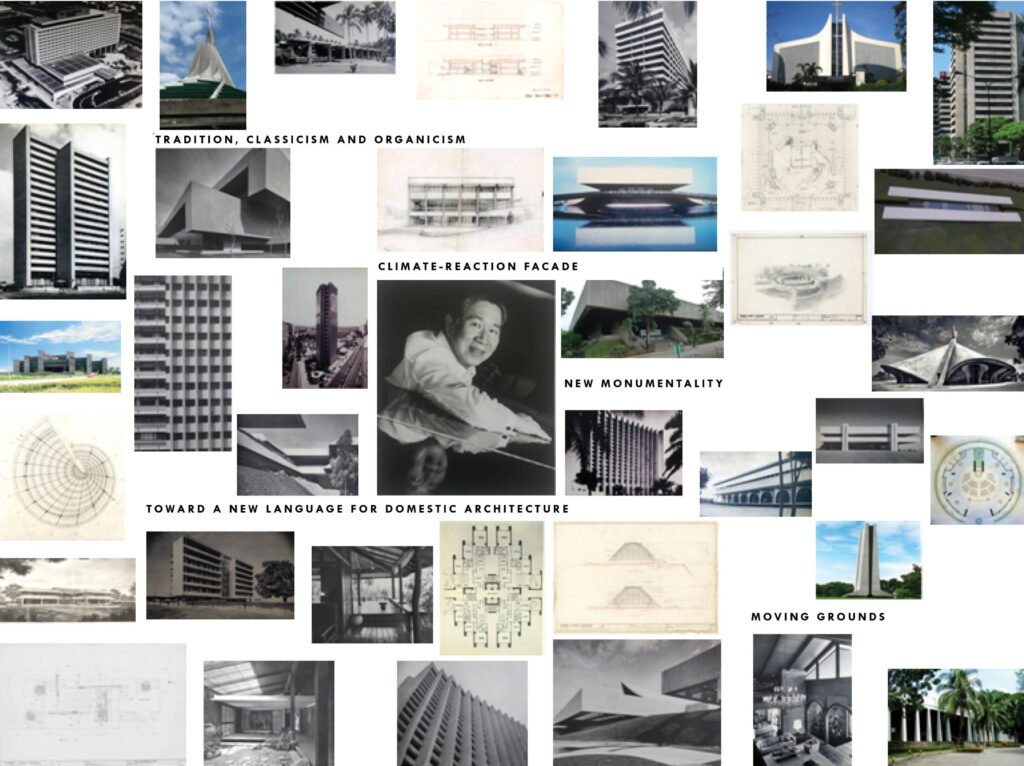



Were there questions or fields of exploration on Locsin that you have not gotten an answer to in your research?
My research is, of course, not exhaustive. I teach project-based learning and construction for first-year bachelor students in an architecture school in Geneva, where I insist on the importance of dialogue between architects and builders. I couldn’t find much information on Locsin’s construction sites and his collaboration with Alfredo Juinio, the structural engineer, or David Consunji, who founded DMCI, a prolific construction company. I am convinced Locsin could not have created such buildings at the start of his career without these two figures. Architecture is also about meeting the right people at the right time. The condition that favored the production of Locsin’s buildings is something I would like to learn more about.
What did you desire to achieve when you embarked on your doctoral thesis? What about Locsin should the world know? Why is it important to know this Asian architect’s works?
My wife and I are in love with the Philippines; the country is beautiful, and the people are so welcoming. Our second child was born in Manila, and the first one is dreaming of going back! But for some reason, the culture is not as well-known as is the case for, let’s say, Thailand or Japan. But if it is less comprehensible and homogenous at first glance (and I realize that no culture should be over-simplified), that is because the culture of the Philippines is rich and complex. To understand it, you need to dive deep into the past to identify all the different influences that reached the country and the capacity of individual regions to assimilate and integrate these external influences without rejecting them, creating, as a result, something uniquely Filipino.
That is the strength of the Philippines during its long colonization period and also of Locsin’s architecture. After Philippine independence, he was very much aware from the beginning that rejecting the past would be a rejection as well of a big part of Filipino culture. The capacity to merge past and present to develop a new architectural language for the country was very much on top of Locsin’s mind, right from the very start of his career. If I could play a small role in saving a portion of his work from the archives, and shedding light on his unique approach to architecture, perhaps it could also help preserve a part of Filipino cultural heritage—for the Philippines and international audiences alike.
It is probably curious for some and flattering for others that a foreign architect would release a comprehensive monograph on one of ours. What are your thoughts on the book’s significance in Philippine architectural scholarship, given its lack of local resources?
There have been some studies before this book, but perhaps my doctoral thesis and the forthcoming book are the most comprehensive because I try to give a global perception of the work. Even if I am a Swiss architect, this book would not have been possible without the generous individuals in the Philippines who supported my effort, as I’ve mentioned before. But having an external eye is also an opportunity, as I’m able to see things that may have become habitual to people living in the Philippines. I also don’t have any ties in the Philippines that would have influenced my decision to do this work. I was quite independent in that respect. I should also make it clear: I didn’t have any direct resources to support this Ph.D. I could not get a scholarship and had to teach and manage my architecture office, all while doing this research and raising a young family—with the support of my wife, who was also a scholar working in the Philippines at the time. I hope the book will open new ground for studies and research on architecture in the postwar period to discover other Filipino architects

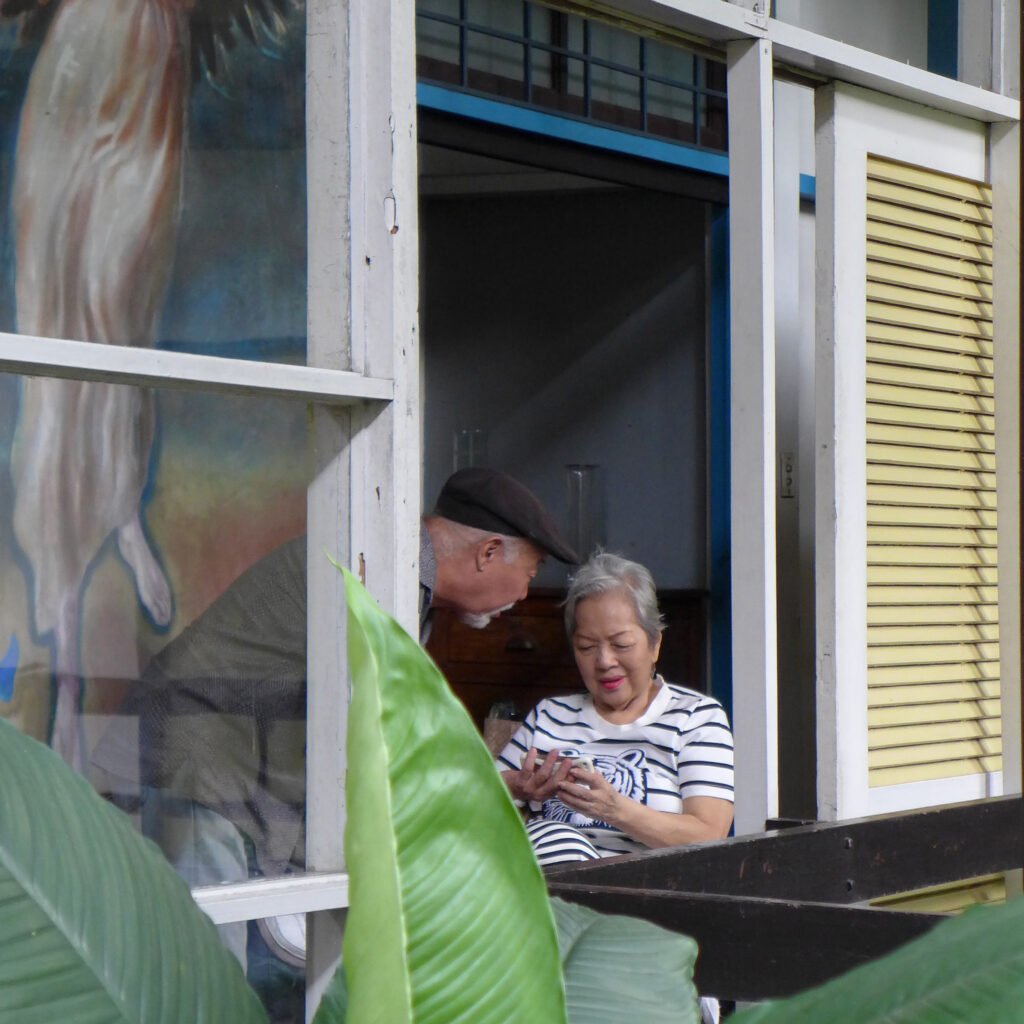


Your talk did not discuss the effect that powerful patrons and the social climate had on Locsin’s work built during a controversial and volatile time in Philippine history. This is why his most renowned work, the CCP’s National Theater, has its share of detractors who point to its Marcosian patronage. What were your findings concerning this?
The Marcos era was undoubtedly a catalyst in Locsin’s work, leading to a high volume of projects and triggering the search for a national identity in architecture. At the same time, I can clearly demonstrate how the ideas that later found form in a large body of his work—from the Cultural Center of the Philippines to the buildings in Los Baños for the University of the Philippines—originated much earlier. He didn’t start working on abstraction or long-span roof coverings because of these opportunities, but no doubt the Marcos era gave him an impetus. I am an architect and a theorist; my goal is to analyze the work as a whole and place it in a historical perspective. I may have a value judgment on the Marcos era, but to me, the work must also stand alone—as part of the Philippines’ cultural heritage. There are other examples of works of art built during terrible periods of history, such as architecture under fascist regimes. Still, the architects were not always aligned with the regime in question. As I never had the pleasure of meeting Leandro Locsin personally, I cannot attest to his position in relation to the Marcos era.
Locsin’s work stands toe-to-toe with the world’s best. Why do you think he has not reached the same heights as his modernist peers in other parts of the world when the Philippines then was considered one of Asia’s economic powerhouses?
In the realm of international architecture, you have two categories: the star architects—who are published everywhere and invited to give talks—and the second category of architects who are as good but not as well-known. Who knows Geoffrey Bawa in Sri Lanka or Charles Correa in India, except for certain specialists? It’s not that their work is less interesting, but that they didn’t manage to reach the level of popularity that some American architects of that same period achieved, such as Eero Saarinen or Paul Rudolph, or, in Japan, Kenzo Tange or Kazuo Shinohara.
As I discovered in my research, Locsin was working on similar themes, such as tradition versus modernity, the use of concrete, and local materiality, but he was not part of the international scene—which was very much focused on the United States and Japan at the time. I also have the feeling that he was not interested in publicity, either from a lack of time or simply out of modesty. Udo Kultermann was probably the first art historian to show an interest in architecture from the so-called “third world,” underlining the ethnocentrism of the mainstream architecture scene in the 1970s.




View of the main stair of the National Theater (1966), CCP Complex, Manila, ©Akio Kawasumi 
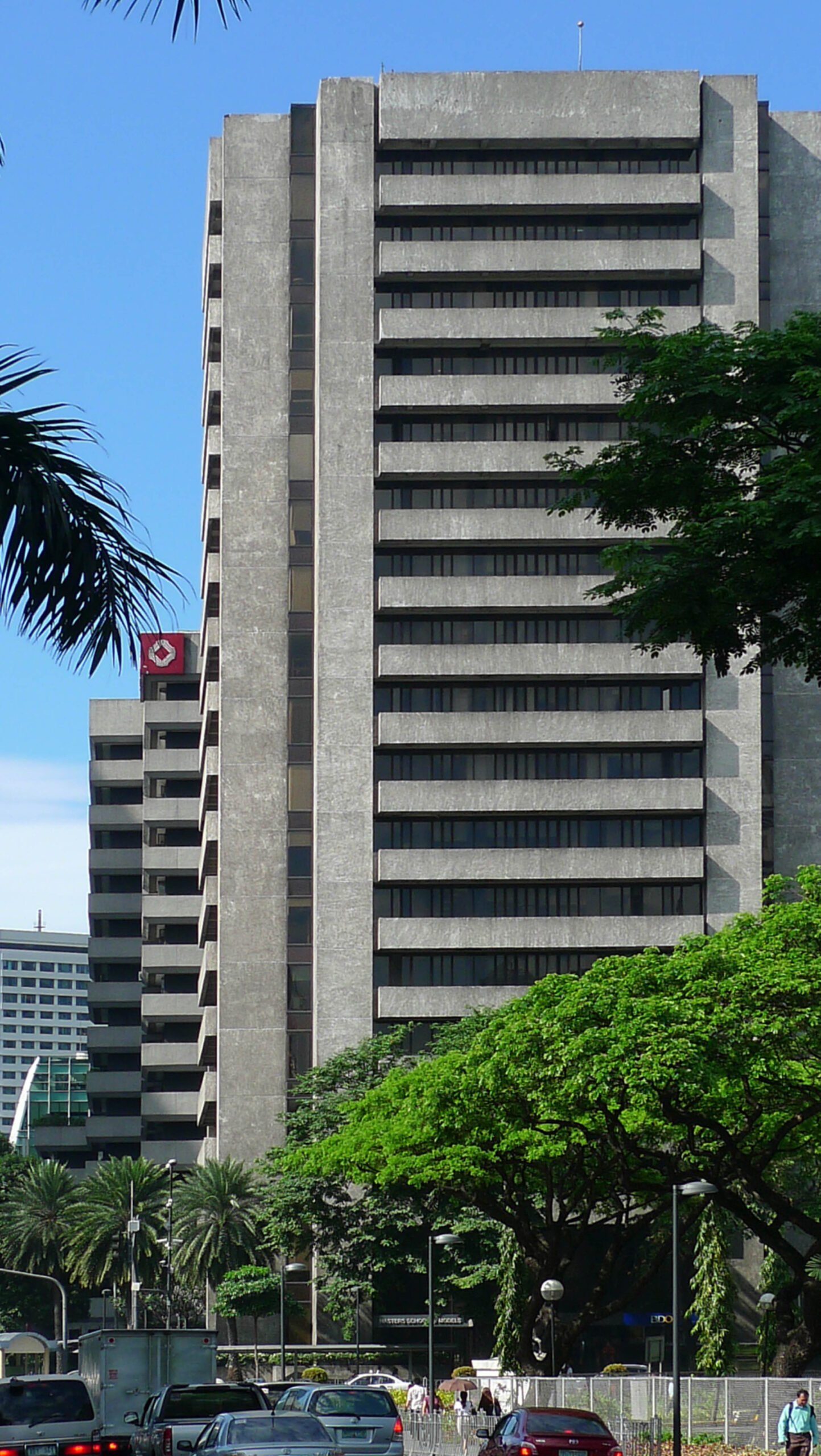
Abstraction in the silhouette of the L. V. Locsin Building (1979), Makati City, ©Jean-Claude Girard
Locsin did not explicitly ascribe his concrete works as brutalist, but they do fit in the bill. Are there aspects of Locsin’s brutalist structures that you found unique or distinct to his body of work?
I don’t think Locsin was interested in putting himself into categories. Perhaps we could say that there are two approaches in architecture: first, the more analytic and theoretical approach, embraced by architects such as Louis Kahn or Ludwig Mies van der Rohe, who had very clear guiding principles that helped them synthesize their projects. Another approach is more intuitive, such as that followed by Alvar Aalto or Alvaro Siza, who work through iterations that lead to a final balance in their projects. I might be wrong, but I believe Locsin belongs more to the second category. He never theorizes his work, and some of the more interesting testimonies of him I could find were from interviews he gave for student projects or magazines. This format gave him the opportunity to tap into the meanderings of his thoughts without giving a single direction that would explain his work.
Regarding the brutalism movement, there’s a difference between the architectural and social revolution theorized by Reyner Banham in 1966, building on the work of Alison and Peter Smithson, and the stylistic movement that was considering the new possibilities of concrete expression led at that time by Paul Rudolph in the States or Kunio Maekawa in Japan. Again, I don’t think Locsin was interested in being part of movements, but more trying to use concrete as a material that you can mix with different aggregates and mold in many ways. The Makati Stock Exchange can certainly be categorized as brutalist in a stylistic sense, as the façades can be related to the Massachusetts City Hall built the same year, in 1969, by Kallmann McKinnell & Knowles.
But if you look closely at the National Theater, you will find different textures rendered by implementing the same material, the most curious one being the plates on the main entrance block, obtained by adding shells before the pouring. The same care is observable in the Locsin Building, where glass was incorporated into the concrete to give a certain vibration to the façades when the sun hits them.
There are many examples like this that make me cautious about categorizing Locsin as a brutalist architect. He was more into exploring the possibilities of a material that he found very appropriate for the Philippines.
Your study of Locsin has also revealed to you a glimpse of the Philippine expression of Modernism. How would you compare and contrast the trajectories of western and eastern architects in their expressions of Modernism?
It would be ambitious for me to compare eastern and western Modernism here, as I am not a specialist in both fields and since my research is based on Locsin’s work. But what I discovered is how the importation of models from the United States, like the National Press Club building in Manila in 1959 by Angel Nakpil—influenced by the founder of the modern movement, Gropius, was not in line with the climate of the Philippines. This fact will lead to adjustments like the use of sun breakers that will appear as the main pattern, for example, in the extraordinary Philamlife Building built by Carlos Arguelles in 1969. Even if many Filipino architects went to study abroad—and Locsin was an exception to this rule—they couldn’t just apply what they learned at Harvard or MIT. They needed to adjust to the local conditions and climate of the archipelago.
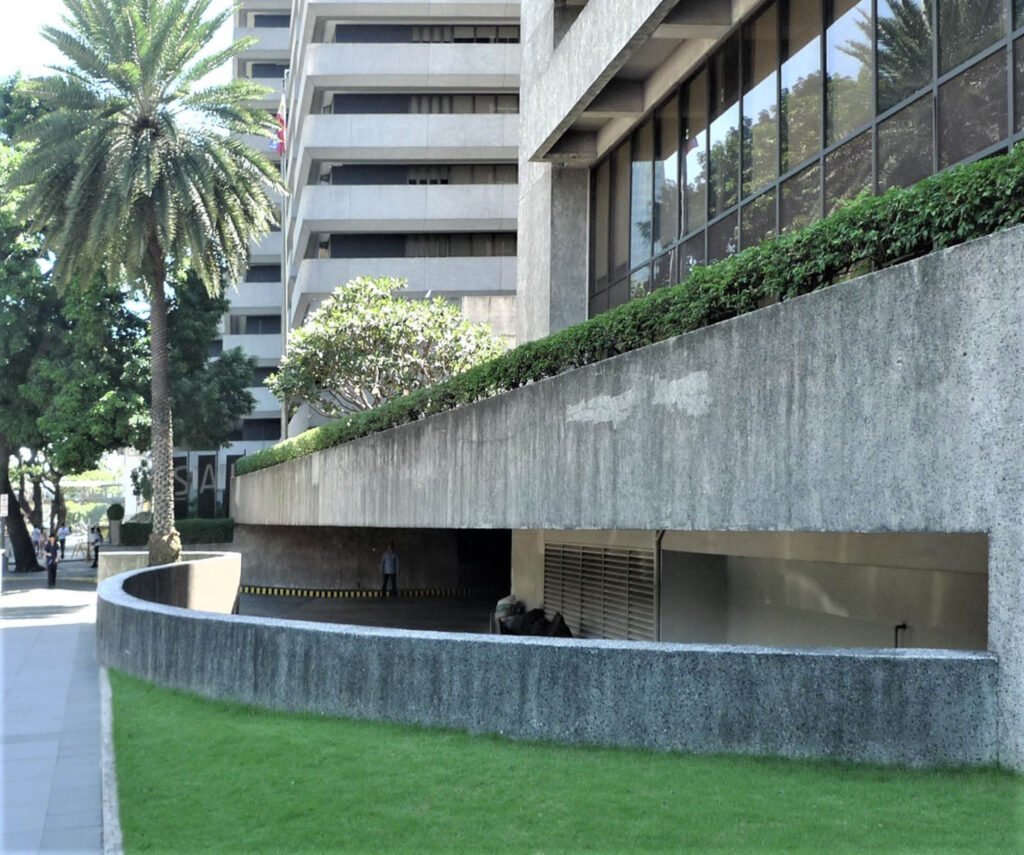

Like his peers, Locsin grappled with the question of a Philippine identity in architecture. He has written about his belief in its existence but stopped short of qualifying it. Armed with your research, could you distill Locsin’s understanding of what Filipino architecture is?
As I mentioned before, Locsin was aware that working in the present didn’t allow him to forget the past: from the colonial experience and historical trade relations. He studied ancient porcelain, gold jewelry, art, music, shells, and perhaps also food since he was an epicurean—and he managed to blend all these influences in his architecture at different levels. He said that Filipino architecture is elusive in the sense that it is hard to capture in one glance. You have to understand the context to be able to find out how it is built. One striking observation about Locsin’s work is how he anchors his buildings in the environmental settings in which they are situated. The buildings don’t just start with the built structure. They are often part of a continuous flow, an entry experience without interruption, accompanying visitors from the outside to the inside. Perhaps this is a reaction to the country’s colonial past, which attempted to impose ‘culture’ in the form of buildings, irrespective of context. Locsin’s architecture is smooth and welcoming, even the Convention Center—if you look at the details.
Is the search for a national identity in architecture something one should still pursue in this day and age?
I think national identity can be perceived in a political way as well as a cultural way. Trying to define national identity through architecture, or any other cultural means, can be dangerous and lead to extremism. Think, for example, the fascist architecture from WWII Italy. It is more important to explore the potting soil available to make cultural expression flourish, including institutions, schools, and spaces that allow for certain forms of art to take seed and grow. We should not be striving for nationalist expression but manifold cultural expressions in a country that respects and represents diversity.


Has your research on Locsin opened your eyes to the work of other Filipino architects that pique your interest and may one day study?
Absolutely, I discovered many other architects—as I knew nothing about Filipino architecture before starting this adventure! Among them, I could mention Jose Maria Zaragoza, Carlos Arguelles, and Alfredo Luz, all of whom I would love to study more accurately. Maybe I will get the opportunity to do so. Who knows?
As an architect yourself, have learnings from your studies on Locsin made any impact on your approach to architecture?
Yes, Locsin’s work inspires me, even if I can’t point to any specific examples. If I studied Locsin’s work, it is obviously because I feel close to it and identify with it. As we discussed earlier on the question of brutalism, there is a theoretical and an intuitive way of working. I am definitely trying to follow the second approach in my own work.
A question you probably saw coming from a mile: what is your favorite Leandro Locsin-penned structure? Why so?
My favorite Locsin building…that’s the most difficult question to answer; as a researcher, I try to avoid stating my personal preferences. But I guess we all have our favorites, and if I had to choose one, I would say that I was really touched by one very small project of Locsin’s, the Meditation Tower, located in the Manila Memorial Park, Paranaque. Built in 1964, it summarizes many of the themes Locsin worked on his entire career, like the abstract or sculptural silhouette of buildings, the way they interact with their immediate environment, the use of monumentality, adequacy with the climate, and with references to vernacular architecture. It shows that, even with a very modest program, Locsin was always looking to anchor his work into a wider field of significance. •
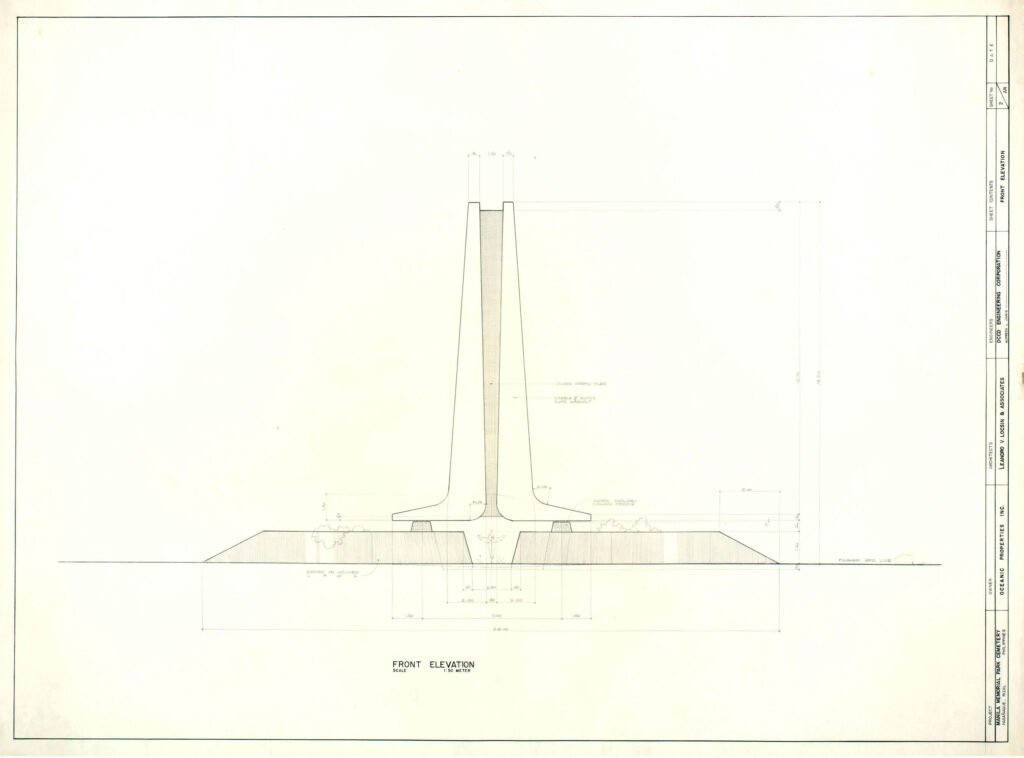

The architect at work at @jcg_architecte
Kanto would like to thank Caryn Paredes-Santillan, Overall Organizer of the mASEANa PH 2020+1 Workshop for making this interview possible.


7 Responses